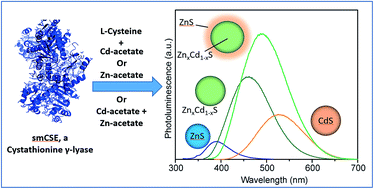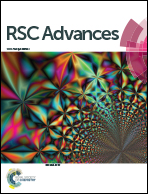Single enzyme direct biomineralization of ZnS, ZnxCd1−xS and ZnxCd1−xS–ZnS quantum confined nanocrystals†
Abstract
Biomineralization is an intriguing route towards the low temperature, aqueous phase, green synthesis of inorganic functional nanomaterials. Herein we describe the biomineralization and optical properties of ZnxCd1−xS and ZnxCd1−xS–ZnS quantum confined nanocrystals that have potential application in optoelectronics. The reported biomineralization process is reduced to perhaps its simplest form wherein a single recombinant cystathionine γ-lyase (CSE) enzyme is responsible for catalyzing mineralization within an otherwise inert solution and plays a role in controlling the alloy composition. The biomineralized nanocrystals are sphalerite structured with average diameter below 3 nm. Biomineralization of a passivating ZnS shell on Zn0.73Cd0.27S core nanocrystals is achieved through subsequent addition of Zn precursor. This shell growth increases the photoluminescence quantum yield to 7% and increases the radiative decay time to 97.6 ns compared with 40.9 ns for the core materials.



 Please wait while we load your content...
Please wait while we load your content...